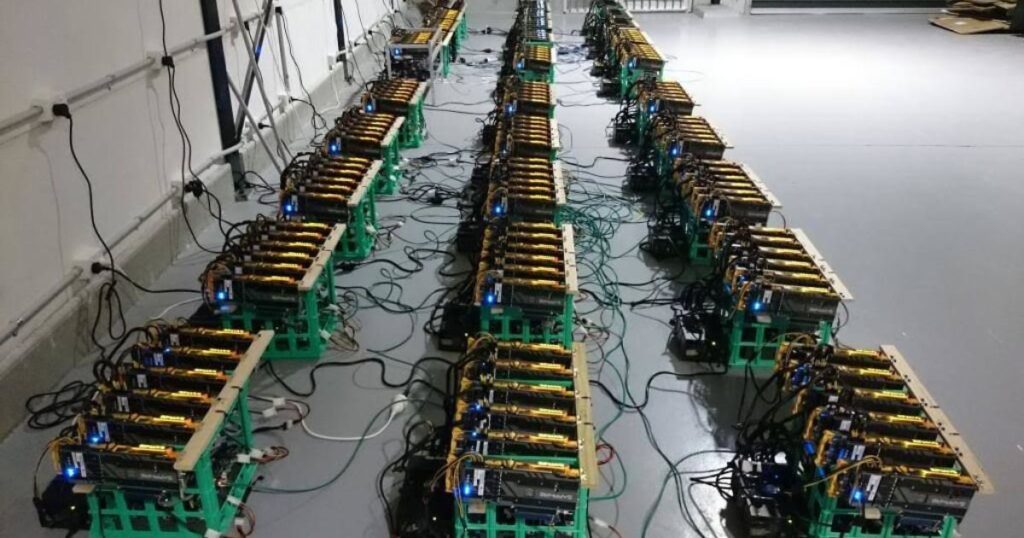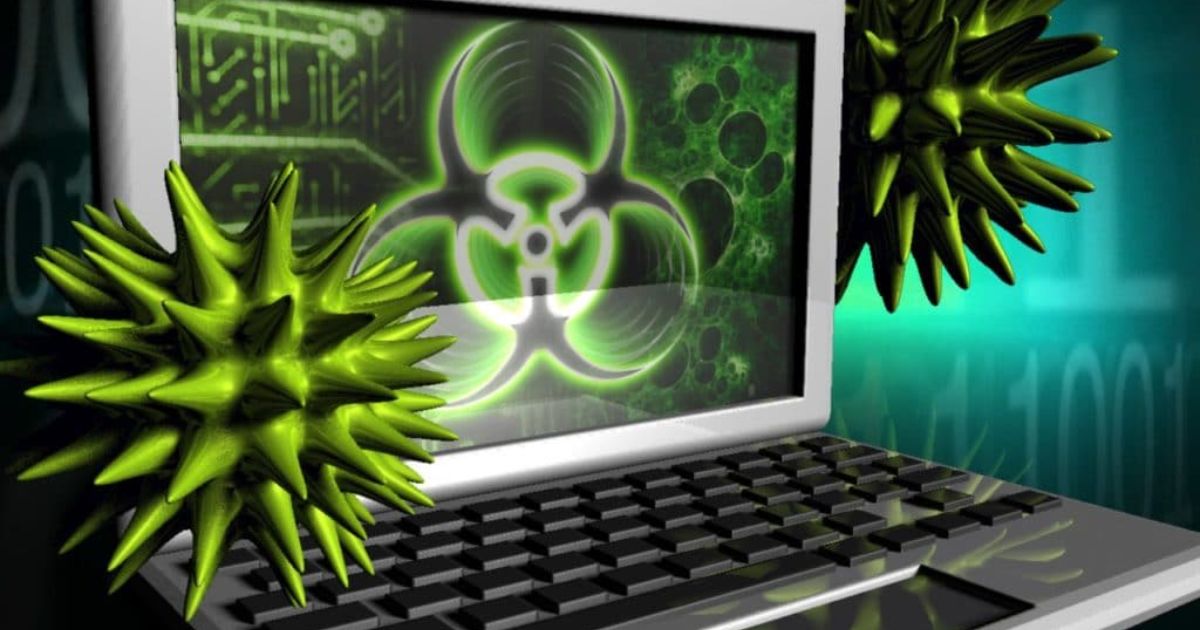With graphics processing units (GPUs) taking on increasingly important roles beyond graphics and gaming, the question of whether viruses can infect these powerful components has become more relevant. In this article, we will explore how GPU viruses work, common types that target graphics hardware, symptoms of infection, impact on performance, and best practices for protection and remediation.
Just like CPUs, RAM, and other parts of a computer, GPUs contain executable code and programmable components that make them theoretically susceptible to malware if exploits can be found. While GPU viruses may not be as prevalent today as CPU or disk-based threats, their potential impact on gaming and cryptocurrency mining makes understanding the risks worthwhile.
As graphics cards have become more powerful and programmable through technologies like NVIDIA’s CUDA and AMD’s Stream processors, they have taken on generalized computing roles beyond just graphics. This has opened up new avenues for potential attacks if bugs or vulnerabilities can be leveraged to execute unauthorized code on a GPU. However, infections remain relatively rare compared to CPU malware.
How Viruses Can Infect GPUs

There are a few main ways in which viruses could potentially target and run malicious code on a GPU:
- Through graphics drivers installed on the operating system. If bugs existed in driver installation or code loading processes, malware could inject its code to run on the graphics hardware. Best White Graphics Cards Nvidia and AMD continually update graphics drivers to address security vulnerabilities.
- By exploiting vulnerabilities in applications that directly program the GPU, like games, benchmarks, and cryptocurrency miners. Malicious programs embedded within or injected into these could execute arbitrarily on the graphics processing cores.
- By tricking the user into visiting compromised websites or installing trojans that then attempt to run CPU-based code on the GPU for crypto mining or other unauthorized tasks.
The core challenge for all GPU viruses is finding legitimate code paths or holes to execute malware on graphics processors without being detected. So far this has proven difficult, keeping most infections theoretical.
Common Types of Viruses That Target GPUs
| Virus Type | Description |
| Cryptojacking Malware | Uses victim’s GPU and CPU power to clandestinely mine cryptocurrency like Monero without permission. Often embedded in trojans and downloads. |
| Ransomware | Encrypts files and demands payment, sometimes also scrambling GPU programming to lock system until ransom is paid. |
| Worms and Trojans | Self-propagating malware that can open backdoors for hackers or deploy GPU-based crypto/botnet payloads on infected PCs. |
Cryptojacking Malware
One of the most common types of potential GPU-targeting malware is cryptojacking software designed to discreetly use processing power to generate digital currencies like Monero or ransom some other manner. This category includes trojans that latch onto systems to mine covertly.
Ransomware
Rather than just encrypting files, some advanced ransomware has attempted to encrypt GPU programming as well to completely lock down an infected computer. Ransoms must then be paid to undo the damage across both CPU and GPU systems.
Worms and Trojans
Other malware written to propagate without user action or sneak onto PCs via social engineering could potentially open backdoors allowing hackers direct access to GPU resources for tasks like password cracking, DDoS attacks from botnets, or cryptocurrency mining.
Symptoms of a GPU Virus Infection
| Symptom | Description |
| Unexpected Cooling Fan Speed Increase | Viruses using the GPU heavily may cause temperature and fan speed to rise noticeably. |
| Lower Frame Rates in Games | Performance degradation as malware utilizes GPU rendering/number-crunching resources. |
| Artifacting or Visual Glitches | Malware damage to graphics drivers or memory could potentially cause graphic errors, pixelation, or distorted display problems. |
Unexpected Cooling Fan Speed Increase
One of the most obvious symptoms of potential GPU infection is an unexpected or unusual increase in the graphics card’s cooling fan speeds, even when no intensive programs are running. This suggests the processor is working harder and heating up more than it should be.
Lower Frame Rates in Games
Heavier malware activity piggybacking on a game or GPU computations could visibly impact frame rates and smoothness. Framerates may drop noticeably across different titles as GPU resources get reallocated to unauthorized tasks.
Artifacting or Visual Glitches
In rare advanced cases where malware actively tries to sabotage graphics functionality, it may cause artifacting colors/pixels on screen, screen tearing, or other distortions. Though generally driver/memory damage would need to occur for serious visual bugs.
Impact of GPU Viruses on Gaming Performance
The impact of a GPU virus on gaming performance can range from mild to severe depending on the type and goals of the malware. Cryptojacking software may only cause a modest 5-10 FPS drop in games. But a sophisticated ransomware could completely lock out the GPU through encryption. Even regular viruses can potentially hog significant processor power, with degradations of 20-30 FPS possible under heavy mining loads. Over time, sustained high GPU usage from malware could also accelerate component wear. Gamers may need to troubleshoot costly hardware failures more quickly.
Performance is also dependent on the game or application, with more graphically intense titles suffering worse hits. Esports games might maintain 60+ FPS where open-world games fall into the 40s. During intensive malware periods, stutter could even be introduced. However, for most casual threats performance remains playable in many cases prior to treatment or upgrades becoming necessary.
Best Practices to Protect Your GPU From Viruses
There are several effective steps PC gamers and others can take to help safeguard their GPUs against potential malware infection:
- Maintain up-to-date antivirus software specifically designed to also scan for Miner, Cryptojacker, and Ransomware threats on all parts of the system including GPU.
- Use a firewall as an additional barrier and only enable network/internet access for trusted programs. Strange traffic could indicate an infection attempting to mine or coordinate botnets.
- Be wary of pirated content, filesharers, and shady downloads that could embed trojans. Game legally unofficial storefronts when possible.
- Enable automatic driver updates from the manufacturer to stay ahead of security issues. Outdated tech leaves known holes exploitable.
- Monitor GPU performance indicators and temperatures for anomalies suggesting unauthorized high workload states. Act quickly if issues are noticed.
Proper protection techniques make realizing a genuine GPU virus much harder. But vigilance remains prudent as threat actors explore new infection avenues.
Steps to Check for and Remove GPU Viruses
- Run a Full System Scan with a reputable antivirus, checking for issues across CPU, storage, memory and GPU. Quarantine any suspect files.
- Delete Infected Files Manually if any cryptojacking or ransomware related programs/drivers/services are discovered on the graphics card.
- Reinstall Graphics Drivers in case malware damaged the existing GPU software installation. Driver cleanup tools can fully scrub prior versions too.
- Consider a Factory Reset as a last resort if multiple scans still detect lingering issues or anomalies after cleaning. This wipes all programs and settings.
Being thorough is key to removing even advanced GPU infections. Multiple scans, file deletions and reinstalling base components helps sanitize thoroughly before continued use.
When to Replace an Infected GPU
For most routine infections that don’t persist after deep cleaning, replacing the GPU may not be entirely necessary. However, in severe incidents where ransomware encrypted graphics hardware or corrupted firmware, continued bugs could plague the system. It may then be wise to retire the component. Some additional signs warranting replacement include:
- Persistent visual artifacts, freezes or crashes in games/benchmarks even after a fresh Windows installation.
- Significantly reduced performance compared to specs that doesn’t improve after many driver versions.
- Premature component failure indicated by constantly rising temperatures/fan speeds and ultimately no video output.
- Sentimental value reasons after a very embarrassing or highly persistent malware experience.
While expensive, swapping an infected GPU ensures a clear slate and avoids worrying about potential unknown side effects down the road from severe infections.
Tips to Prevent GPU Viruses From Gaming and Mining Activities

| Tip | Description |
| Use Antivirus Software | Scan gaming PC regularly and always for crypto-malware targeting unused computing power. |
| Avoid Unsecure Websites | No pirating, porn or dubious content – stick to official game storefronts. |
| Apply OS and Software Updates | Fix security issues quickly on Windows, drivers and favorite game launchers. |
| Enable Firewall Protections | Shield network access points to warn of strange outgoing GPU traffic. |
Use Antivirus Software
Having reliable security that checks GPUs can help spot infections early before gaming/mining damage occurs or viruses spread elsewhere undetected.
Avoid Unsecure Websites
Many trojans piggyback on lax browsing habits to strike. Reduce risk factors by steering clear of sketchy online hotspots.
Apply Operating System and Software Updates
Keeping Windows, macOS, favorite games and GPU drivers patched removes known vulnerabilities. Outdated systems languish with potholes waiting to be leveraged.
Enable Firewall Protections
A firewall acts as an extra barrier to identify strange outgoing port activity from the GPU that could indicate abnormal remote access or mining behavior without permission.
FAQ’s
Can a graphics card be hacked?
Yes, it’s possible for a graphics card to be hacked if vulnerabilities are found in its firmware, drivers, or programs that interface with the GPU like games and mining software. Advanced hackers may be able to execute unauthorized code.
Can a virus hide in a GPU?
While uncommon, it is theoretically possible for malware to infect and hide in a GPU if flaws are discovered that allow code execution directly on its processing cores. Viruses would target graphics card memory or firmware.
Can GPUs hold viruses?
GPUs can potentially hold viruses since they contain executable code and programmable components. However, infecting graphics hardware is still difficult since most code runs on the CPU primarily. Finding GPU exploitation vectors remains a challenge for malware authors.
How do I know if my graphics card has a virus?
Signs may include higher than usual fan speeds/temperatures, gaming performance issues, visual glitches, and antivirus detecting suspicious files or activity related to the GPU. Regular scans and monitoring for anomalies can help spot possible infections early.
Conclusion
In summary, while GPU viruses may not currently be rampant, they remain a credible threat theoretically as graphics processors take on more general computation workloads. Following best security practices like antivirus use, safe web habits and updating firewalls and drivers helps strengthen defenses against potential future infection types leveraging as yet undiscovered bugs or backdoors. For most enthusiasts, enjoying games securely with vigilance strikes the right balance over unnecessary worry. With care taken, the risk of a virus seriously impacting graphics hardware performance or gaming enjoyment remains low.











